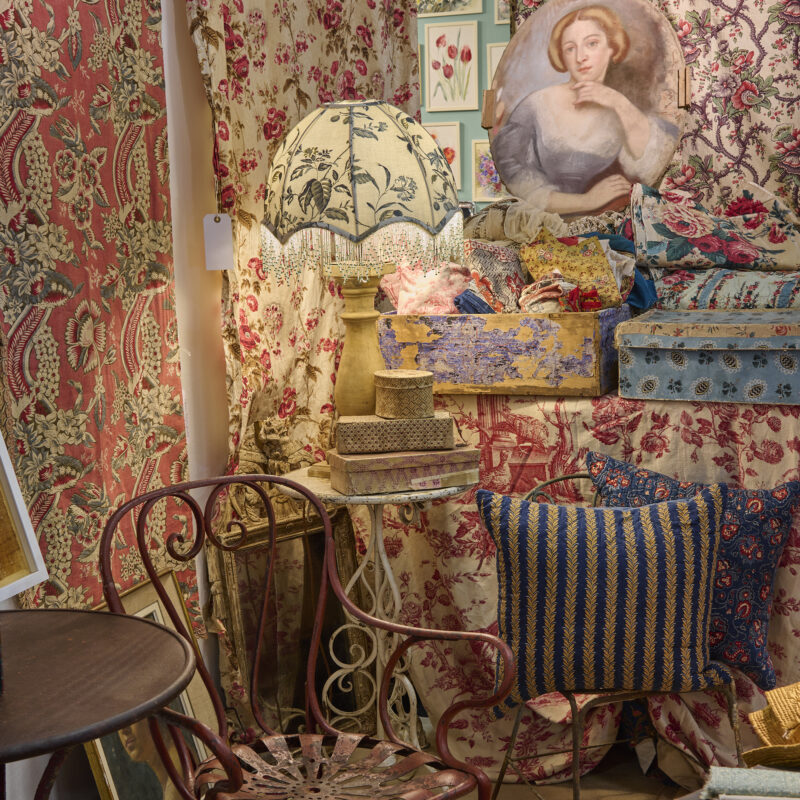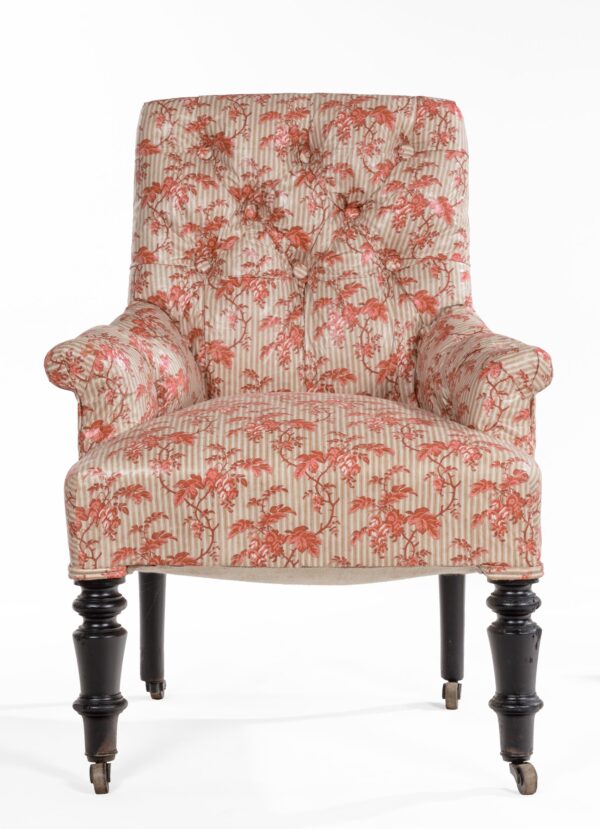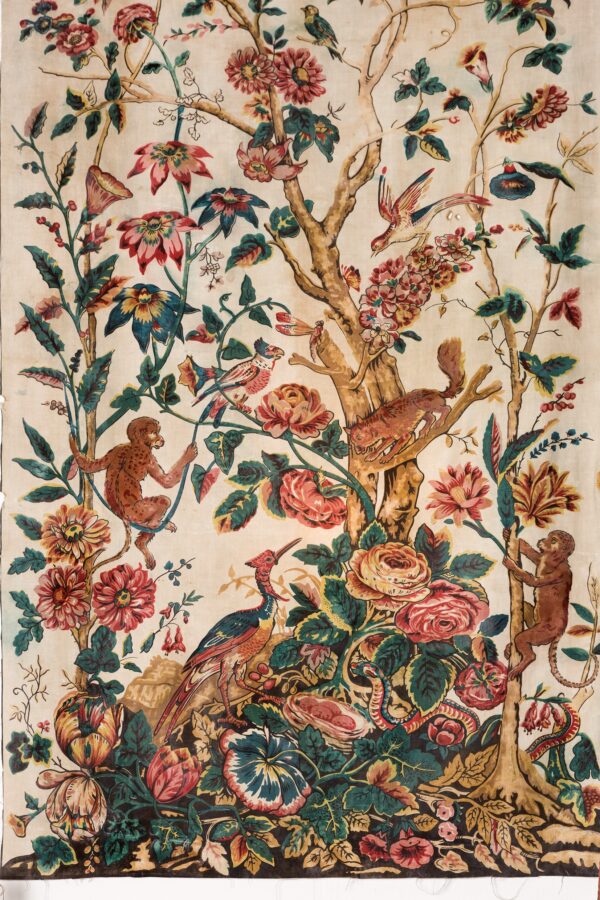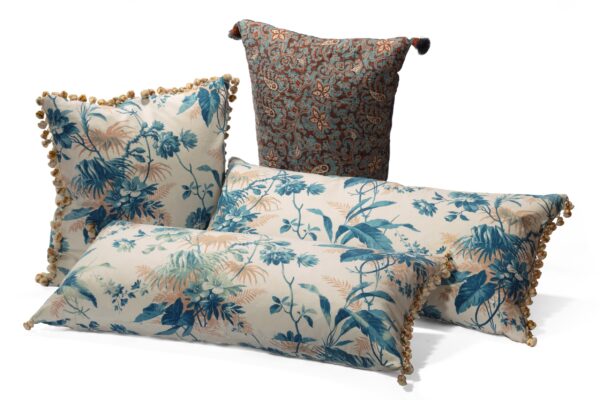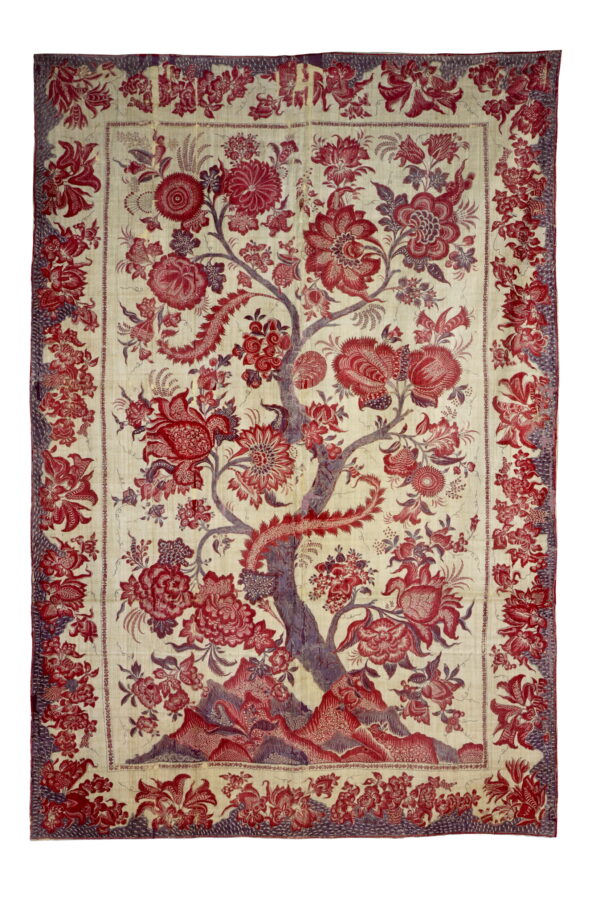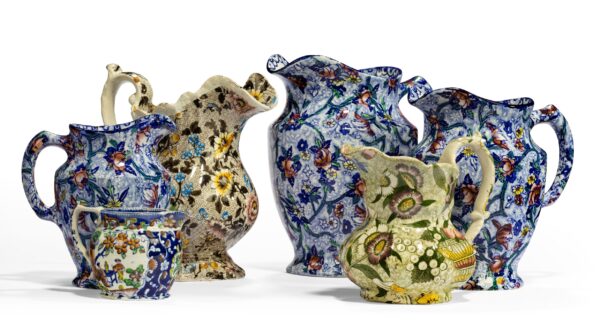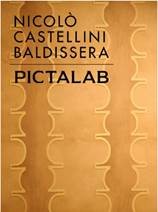An enduring element in traditional and contemporary country house interiors is the floral patterns and uplifting colours of chintz textiles. We’re sharing a short history of chintz, a printed fabric experiencing somewhat of a resurgence in the interior design world. Antique and vintage chintz examples still inspire – interior decorators, textile designers and contemporary manufacturers emulate and incorporate this timeless classic style in current decorating trends.
Chintz is calico cloth printed with flowers and other devices in different colours. The word Chintz is Hindi and derived from the Sanskrit “chitra” which means many-coloured or speckled.
Child-sized upholstered C19th French chair covered with antique chintz C1860
Chintz was originally a painted or stained calico (an unbleached cotton cloth) produced in India from 1600 to 1800 and popular for bed covers, quilts and draperies. A major centre of production at the time was Calicut which leant its name to the finished cloth. First exported to Europe in the early 1600s, Indian chintz textiles quickly captivated the western market and put chintz at the centre of a revolution in dress and furnishing in the seventeenth and eighteenth centuries. Around 1600, Portuguese and Dutch traders were bringing examples of Indian chintz textiles into Europe. These early fabrics were extremely expensive and rare. By 1680 more than a million pieces of chintz were being imported into England per year, and a similar quantity was going to France and Holland.
French C19th Tree of Life design block printed cotton chintz panel, Katharine Pole
With imported chintz becoming so popular with Europeans during the late 1600’s, French and English mills grew concerned, as they could not make chintz. In 1686 the French declared a ban on all chintz imports. In 1720 England’s Parliament enacted a law that forbid “the Use and Warings in Apparel of imported chintz, and also its use or Wear in or about any Bed, Chair, Cushion or other Household furniture“. Even though chintz was outlawed, there were loopholes in the legislation. The Court of Versailles was outside the law and fashionable young women continued wearing chintz. In 1734, a French naval officer, M. de Beaulieu, who was stationed in Pondicherry, India, sent home letters along with actual samples of chintz fabric during each stage of the process to a chemist friend detailing the dyeing process of cotton chintz – thus bringing the secrets of chintz manufacture in to Europe. His letters and samples can be seen today in the Musee’ Nationale d’Histore Naturelle in Paris. By the 1760s the ban in France and England against chintz was lifted, by which time both countries had mills readily producing this desirable fabric.
C19th French antique chintz made up as cushions, Katharine Pole
Europeans at first reproduced Indian designs, taking advantage of consumer demand, and later added original patterns featuring European flora. A single-colour French chintz that became widely known and enjoyed was toile de Jouy, manufactured in the town of Jouy between 1700 and 1843. In recent years, many contemporary fabric houses have introduced their own take on this famous and much-loved textile design, and buyers at the Fair are frequently drawn to antique and vintage examples of this French cotton printed cloth.
C18th Chintz Palampore “Tree of Life” cloth, made for Sri Lankan market, from the Coromandel Coast, India
Chintz patterns produced in England around 1760-1780 were influenced by Gothic and Chinese designs fashionable in furniture, and exotic bird patterns. The flowers and objects in these designs were massed together, like little disjointed islands floating in mid-air. These exotic patterns are not exclusively found upon chintzes, but also on early English porcelain for example.
Katharine pole’s stand
During the Hepplewhite and Sheraton periods of furniture in the late 18th century, chintz patterns cease to be detached and grouped. Architectural details with figures (like those employed in toile the Jouy) disappear, and once more designers return to flowers as a subject for illustration. The foliage now takes the form of vertical stripes, being contained within lace-like ribands placed at even distances.
In the nineteenth century chintz designs featured disjointed sprigs, as though the flowers had been plucked and strewn over the cloth, or used meandering stems to hold them together. It remained so popular as a fabric pattern that Staffordshire pottery factories frequently used it on affordable crockery designs, thus chintz made its way in to homes of all incomes.
Chintzware English pottery jugs, 19th and 20th century. Sue Norman & Linda Jackson
Where to buy antique chintz textiles: Antique and vintage chintz textiles made in the 19th and early 20th century are often found for sale at The Decorative Fair – not only from specialist textile dealers, but also in use on furniture upholstery and as original framed design drawings.
Dealers who regularly stock antique textiles such as chintz and toile de Juoy, and vintage printed cottons, are Katharine Pole, Su Mason and Rhona Valentine.

